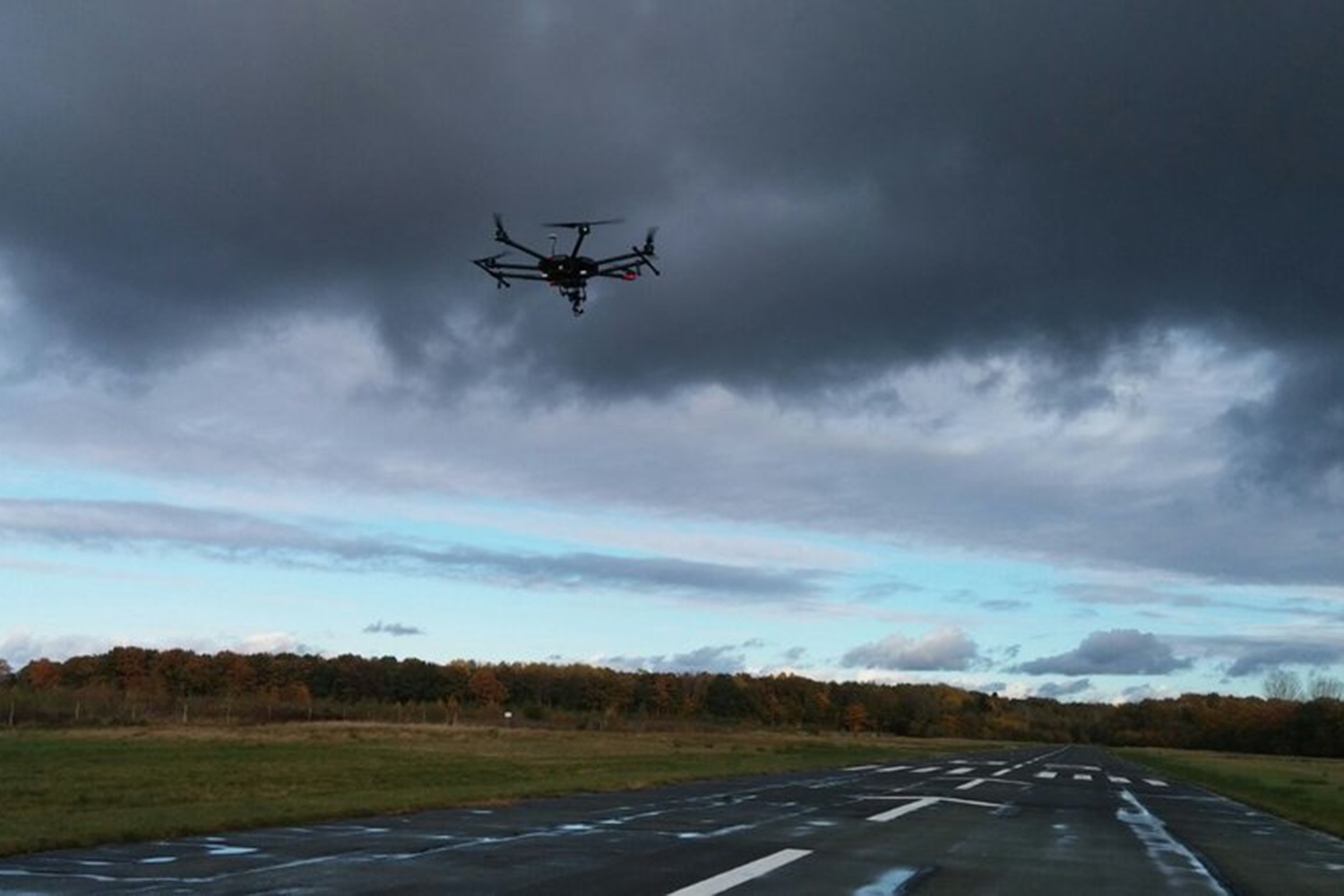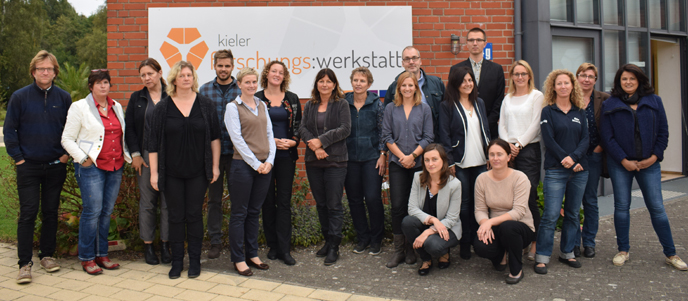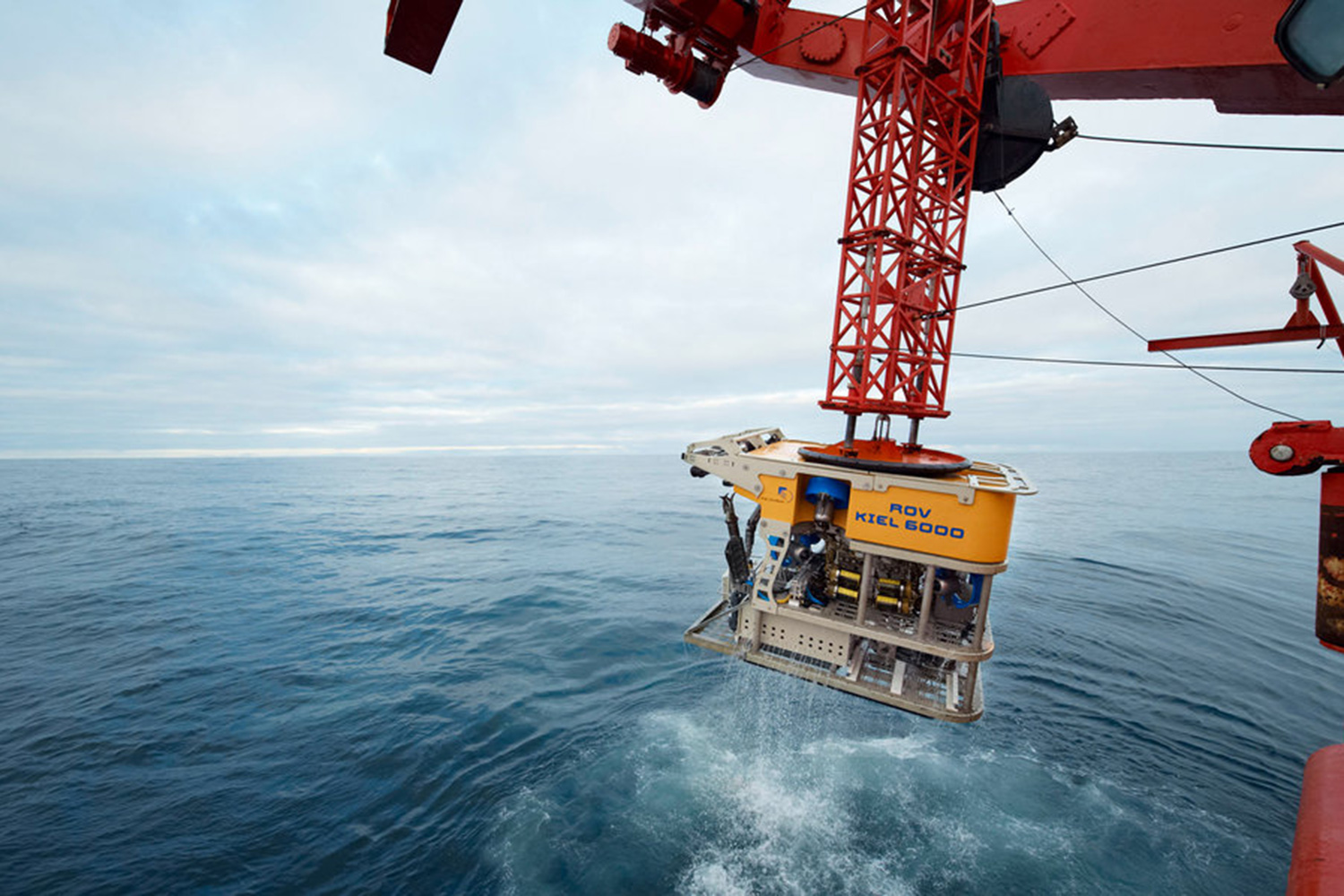Up to now the researchers had to complete a comprehensive training program. "The device weighs nine kilograms and has a diameter of one and a half meters. This model is usually used by professional filmmakers. So it is not a small toy which you can operate without training," explains the marine chemist Dr. Birgit Quack from GEOMAR.
In addition to its own weight the drone can take carry six kilograms of equipment into the air. "At this point we have equipped them with sensors which measure meteorological parameters such as air temperature, air pressure and humidity as well as some trace gases. However, we have not fully utilized the payload yet, so we can further adapt the equipment depending on the research question," explains Prof. Christa Marandino from GEOMAR, who is specialized in the study of marine trace gases. The drone was procured within the framework of the LASSO project, which was funded by the Kiel Cluster of Excellence "The Future Ocean" (Lagrangian study of marine trace gas air-sea exchange over the Ocean).
The trace gases that are of interest to research include not only oxygen, which is vital for life, or the greenhouse gas carbon dioxide, but also many substances which are chemically active in the atmosphere. Among them are, for example, chlorofluorocarbons, which can damage the ozone layer which protects against harmful UV rays. They have been banned internationally, however, they are still found in the air because of their chemical stability," emphasizes Dr. Quack. "From there, they also reach the oceans. On the other hand, the ocean is the main source of many trace gases which reach the atmosphere. Among these are, in particular, highly reactive organic compounds containing oxygen, sulfur and halogens in their molecules. Sulfur and halogens are involved in the formation of aerosols (floating particles in the air) and the destruction of ozone in different altitudes of the atmosphere.
Previous studies have shown that concentrations of many marine trace substances of unknown origin increase near the coast. It is unclear whether the compounds occur in high concentrations in coastal waters, are emitted in particularly high concentrations in the surf zone, or are formed by springs near the coast. "So far there is little knowledge about the exchange of compounds between the air and sea water on the coast. If marine and terrestrial air masses interact at the coast, special conditions are created which have not been adequately studied and understood yet," says Christa Marandino. The new drone should change this now. "It provides us with the opportunity to take samples from this inaccessible area in short intervals and measure a variety of trace substances for the first time," adds Birgit Quack.
Links:
www.futureocean.org The Cluster of Excellence "The Future Ocean"
…


